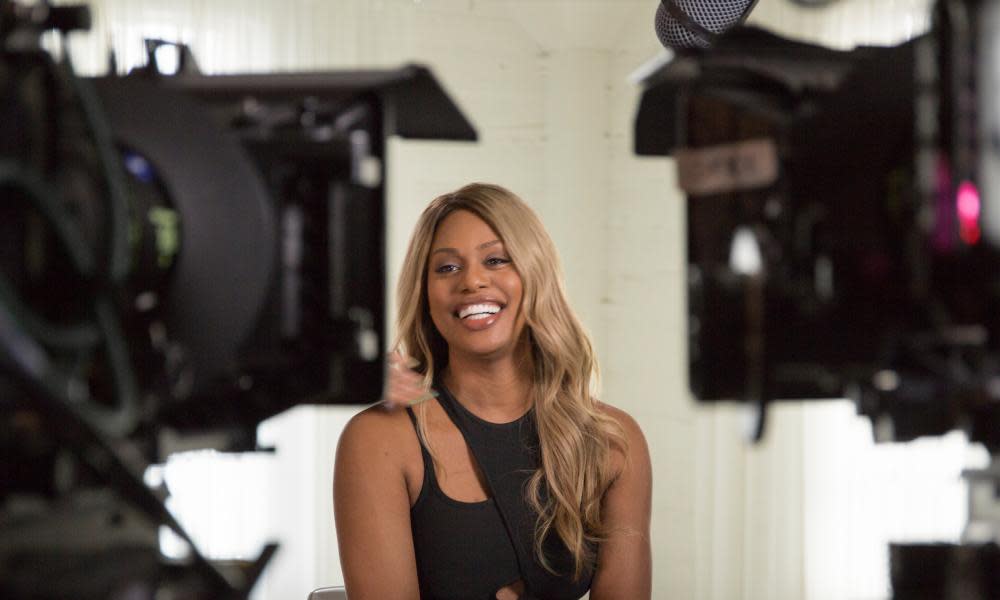'Tough but profoundly cathartic': can Disclosure change trans representation on screen?

Roger Ebert, the godfather of American film criticism, once said: “movies are like a machine that generates empathy”. Cinema matters, he said, because empathy is “the purpose of civilisation and growth”. It matters because at its best it can help us to learn about and learn to care about others, especially those who are different from ourselves.
Storytelling on screen is one of modern humanity’s most efficient means of making that learning happen. Sometimes it can be too efficient. I’ll never forget having to leave our local cinema, aged 16, when my mum became overwhelmed by the opening scenes of the Holocaust biopic, The Pianist. Or a story might simply be perfectly calibrated for you at that particular moment. Then, it can generate the kind of profound, formative empathy that changes the way you see the world. I think Spike Lee’s Do The Right Thing did this for me at around that same age. It feels safe to assume that everyone reading this has had a few experiences with film or television, that serve as their proof of Ebert’s empathy machine.
There is one group of people in particular, who have been denied this chance for too long. The new Netflix documentary Disclosure is a tough yet timely reminder that the onscreen stories of transgender people have not been used to generate much in the way of empathy. Whether it’s fiction or non-fiction, TV or cinema, trashy bit-parts or big-budget biopics, these shockingly repetitive, one-note narratives and characters have, in fact, done the exact opposite. They have generated misunderstanding and distaste for over 100 years, othering a whole group of people.
I’m trans and I found the documentary a tough watch – albeit profoundly cathartic. I watched it with my mum, stepdad and brother. There were awkward moments, when I wondered if I would combust into smouldering cinders of shame beside them. But it was worth it to see how taken aback they were at the end and to hear what about it in particular they each found revelatory.
Disclosure is packed with insights and untold stories. It will surprise you, no matter what you bring to it. The idea that stayed was the cause and effect of seemingly insignificant cinematic moments. By tracing the faintest of threads through history for the first time – namely, the evolution of gender nonconfirming and trans characters on screen – we see shockingly vivid patterns and tropes emerge. “How did we not see this happening?” one might wonder. Or even: “How did we let this happen?”
Subtly but with authority, the film suggests that cognitive distance between trans and cis people has not caused a history of bad trans storytelling. Rather, the distance that persists today is the inevitable, cumulative effect of the bizarre and terrible stories cis people have told or controlled about trans people.
From D. W. Griffith’s Judith of Bethulia in 1914, through to the last time you were sideswiped by a trans genitalia joke (for me it was The Inbetweeners Movie), trans and gender-nonconforming characters have always been used as a code for “otherness”. Trans characters on screen simply take whatever mode serves the broader narrative: ridiculous, tragic, terrifying or simply “object” (often dead on arrival). They are never themselves, never “you and me”, never “us”, never the centre of a story.
There is a clip from 2012, where legendary US TV host Barbara Walters says to her trans guest: “‘The skin of the penis is used to create what appears to be a vagina, is that correct?” Aside from being a shocking question for a guest in itself, the line reminded me, with a jolt, of Buffalo Bill in Silence of the Lambs. The cross-dressing psychopath utters the line: “It rubs the lotion on it’s skin ...” to his victim, so that her skin is easier to remove after death.
My brain made that connection involuntarily. It makes others everyday that I don’t even notice – some positive, some neutral, some extremely unpleasant. That’s just what brains do. But what if, when it comes to trans people, this language and lens effectively never change? If every setting, from breakfast TV couch to dungeon of death, evokes a vaguely similar set of ideas – suspicion, disgust, freakish physicality – how can we hope to learn anything but fear and distrust of trans people, or, as the case may be, of ourselves?
Disclosure is not a film about trans representation in the abstract. It is a living history of how we have all been taught to see and understand this 1% of humanity as murderers, victims, punchlines, liars, psychopaths and freaks of nature. It is about how movies and TV can use the power they have to generate empathy to just as easily create disgust and distance.
And yet, Disclosure is invaluable. This is the historical analysis we need now more than ever. Hopefully, it will act to accelerate progress in storytelling, as is shown happening in the US in an uplighting final segment. Maybe it will even help us Brits understand where we find ourselves, still debating the validity of basic equal rights and legal protections for trans people. Long passages of this documentary might help to explain how some have been led to speak baselessly of trans women as would-be predators, never seem to speak of trans men at all and yet blame all trans people for upholding and reinforcing reductive gender stereotypes.
In reality, trans people did not create this fear-mongering mess of myth and misinformation. But a film like Disclosure shows how we are, with endless grace and good faith, working to fix it.

 Yahoo News
Yahoo News 
